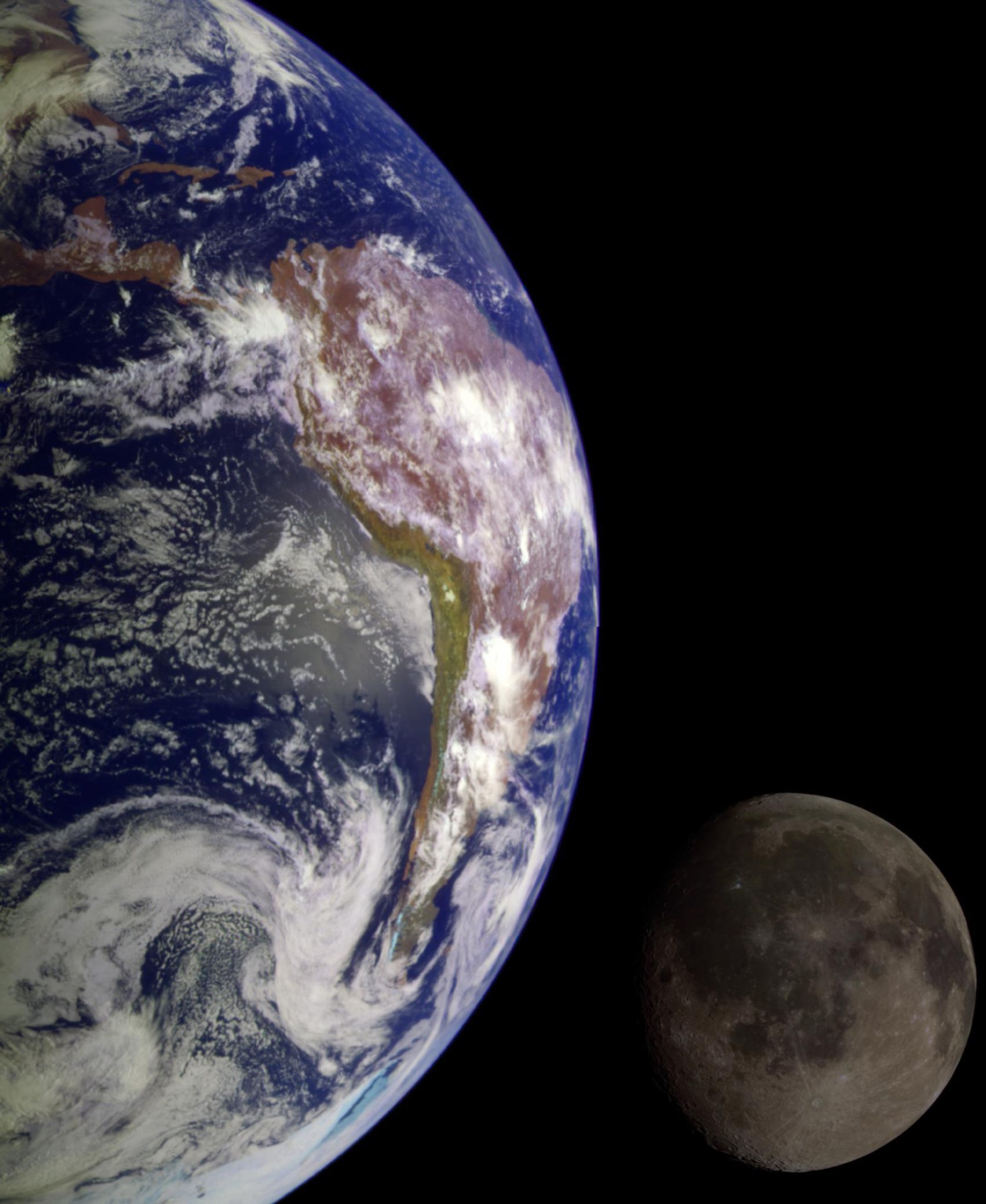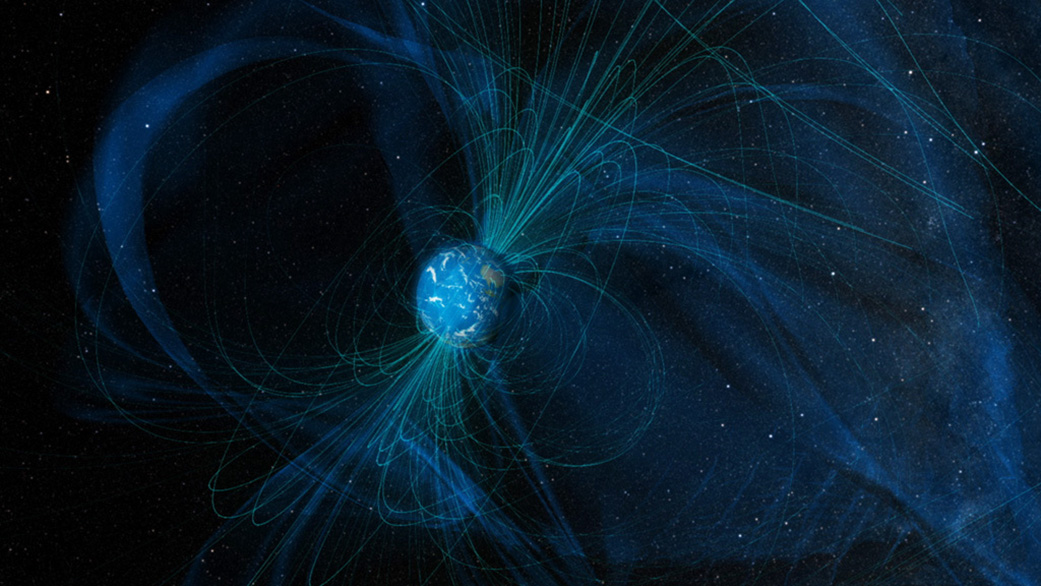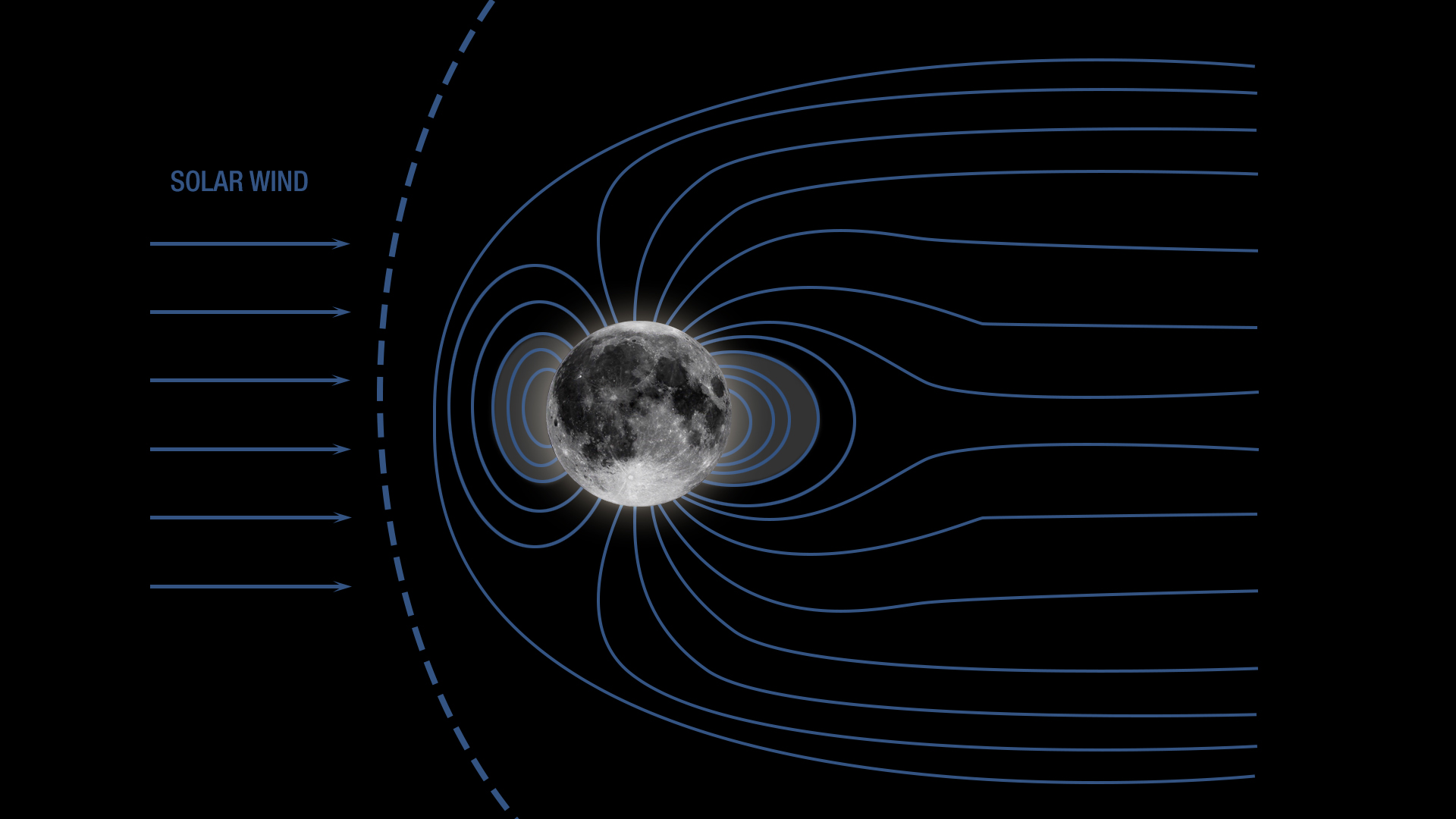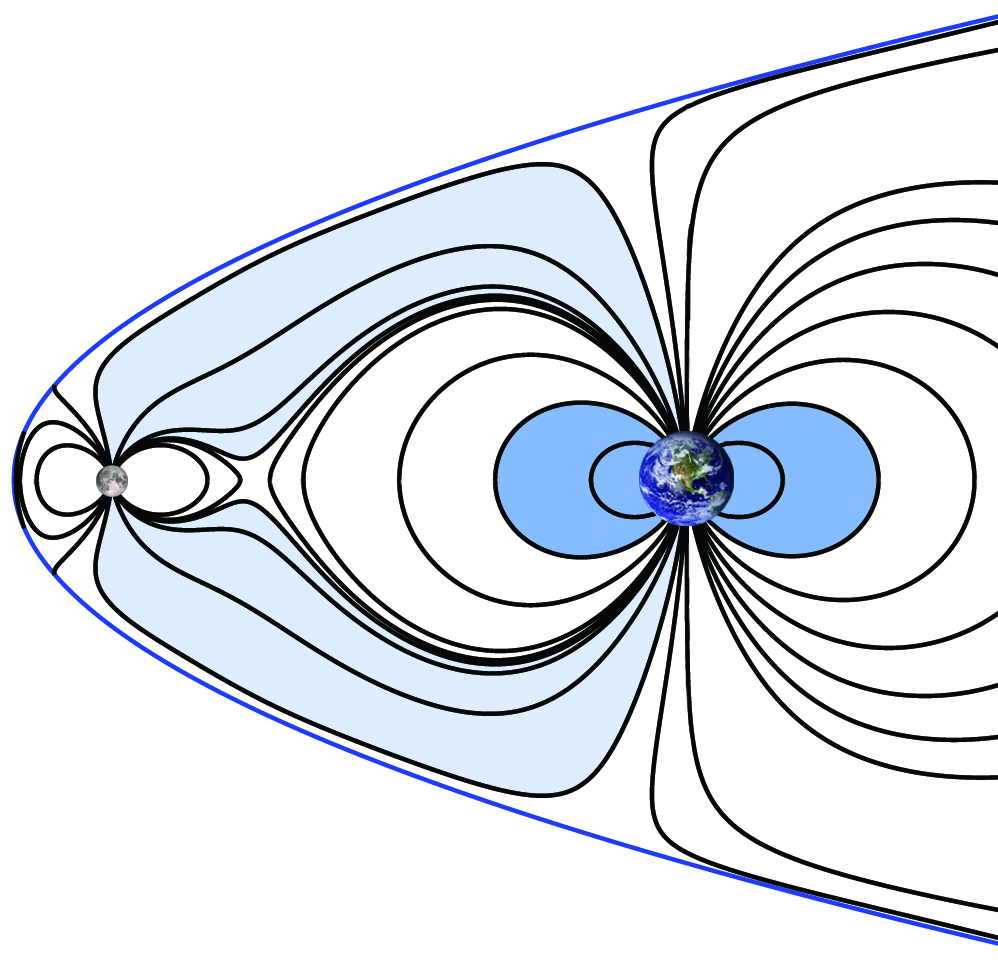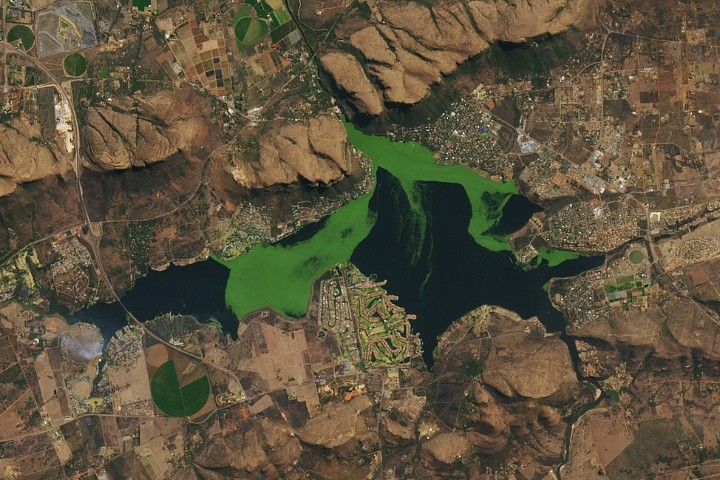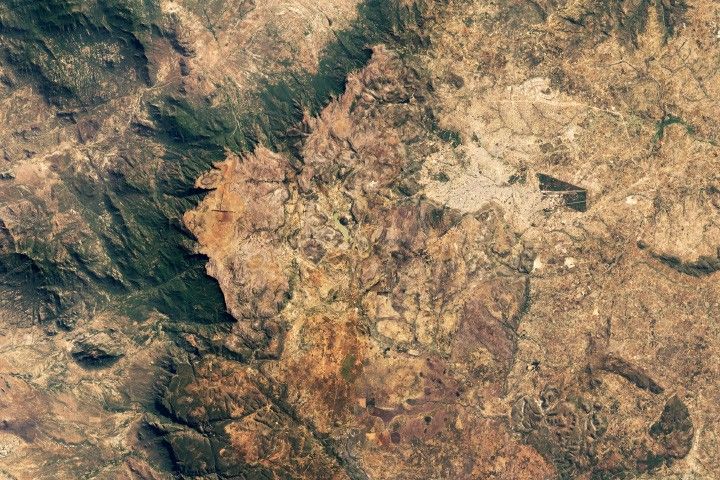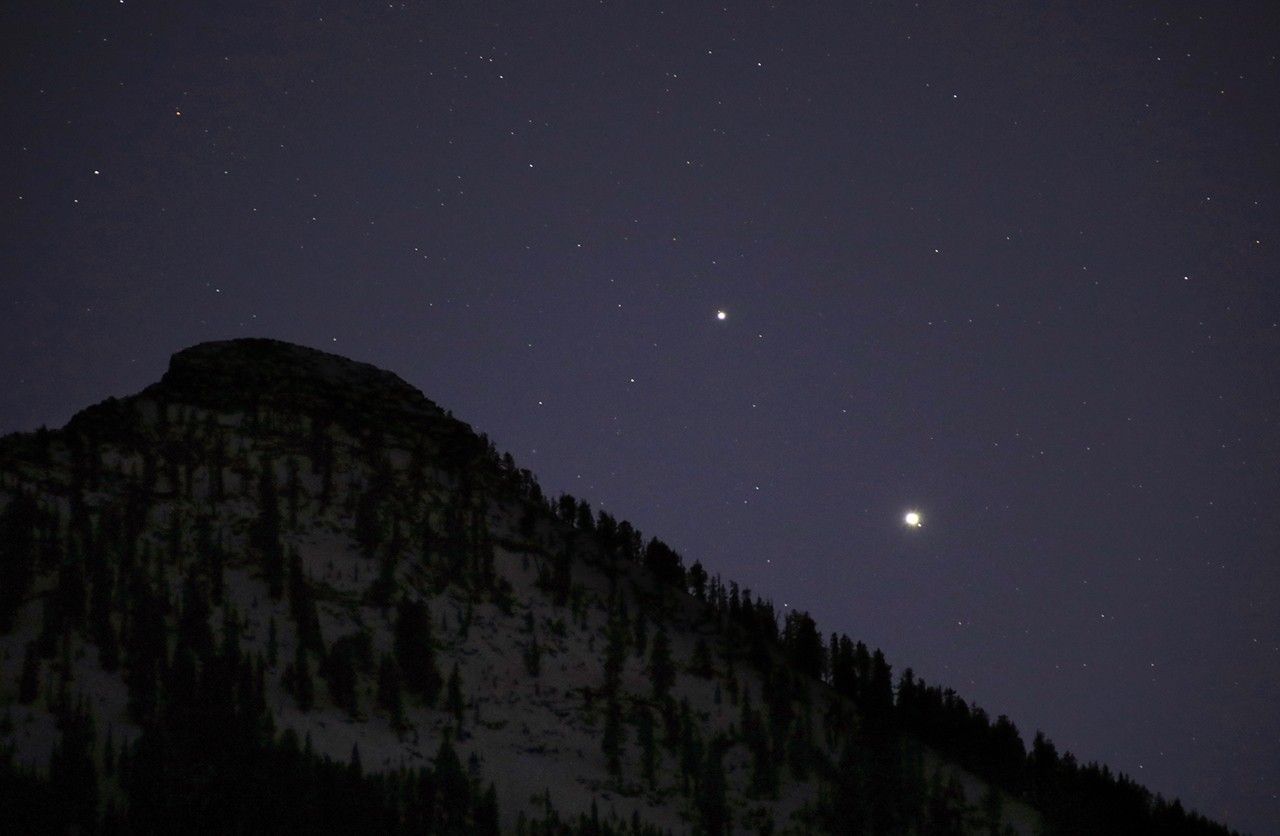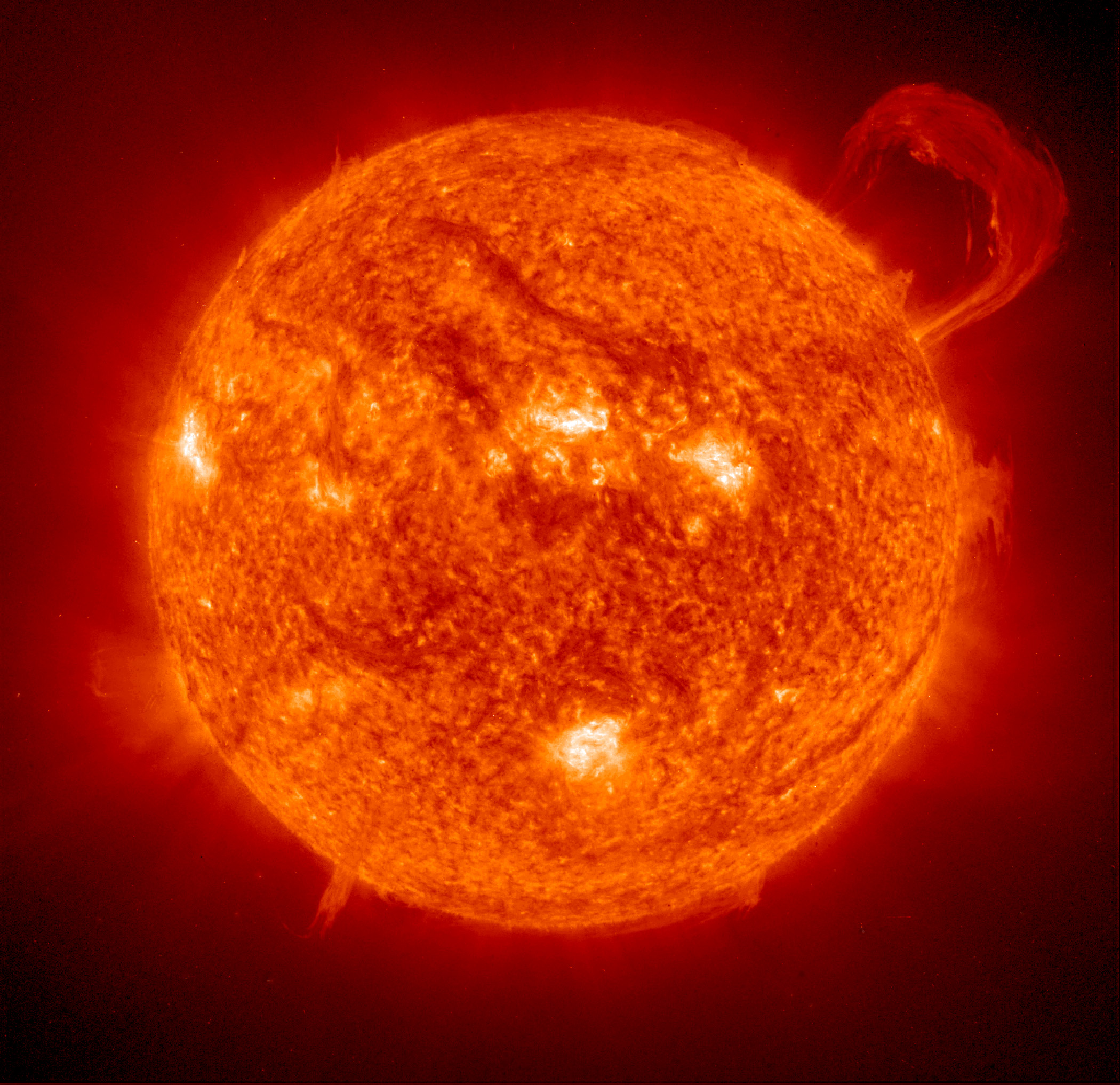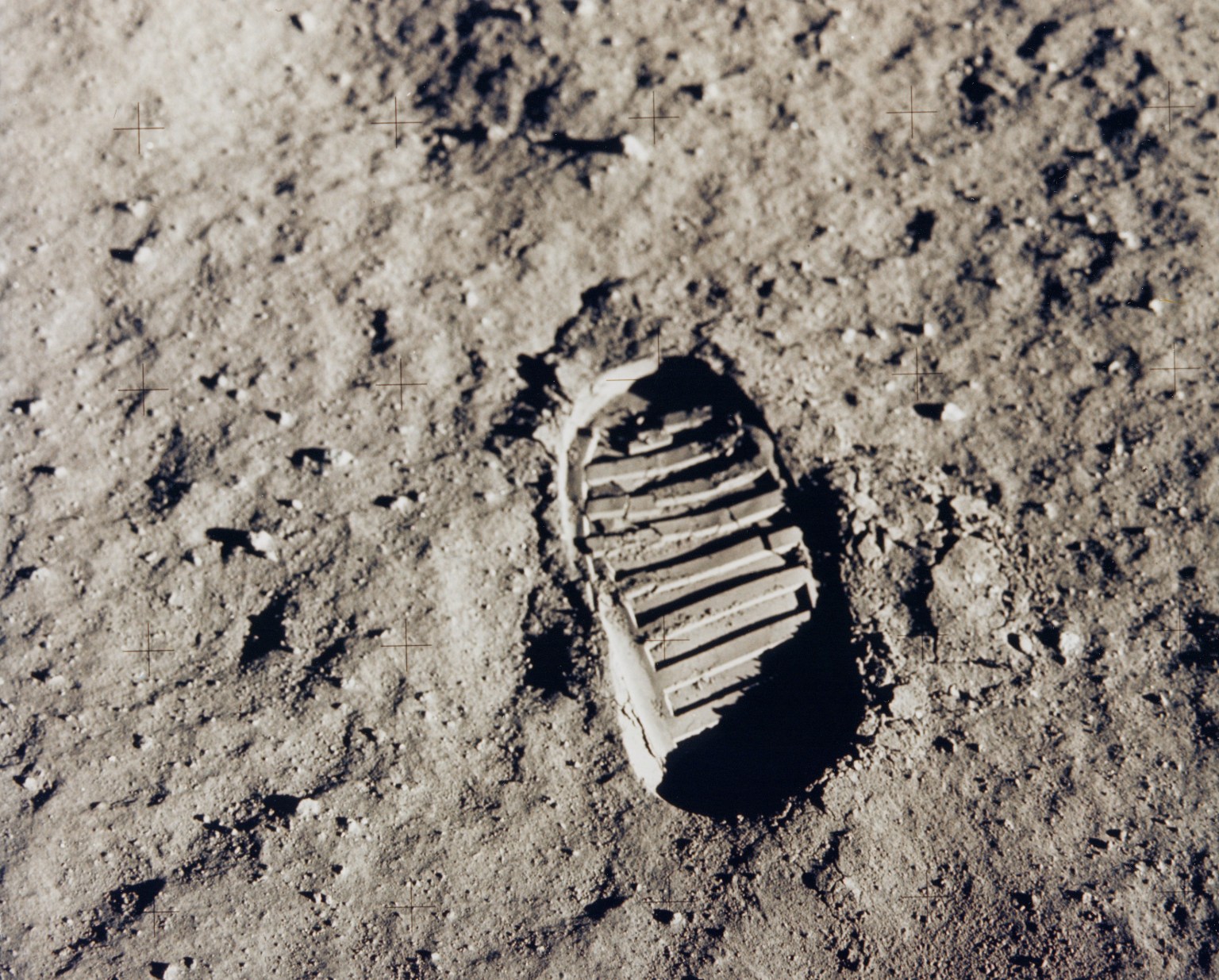Four-and-a-half billion years ago, Earth’s surface was a menacing, hot mess. Long before the emergence of life, temperatures were scorching, and the air was toxic. Plus, as a mere toddler, the Sun bombarded our planet with violent outbursts of radiation called flares and coronal mass ejections. Streams of charged particles called the solar wind threatened our atmosphere. Our planet was, in short, uninhabitable.
But a neighboring shield may have helped our planet retain its atmosphere and eventually go on to develop life and habitable conditions. That shield was the Moon, says a NASA-led study in the journal Science Advances.
“The Moon seems to have presented a substantial protective barrier against the solar wind for the Earth, which was critical to Earth’s ability to maintain its atmosphere during this time,” said Jim Green, NASA’s chief scientist and lead author of the new study. “We look forward to following up on these findings when NASA sends astronauts to the Moon through the Artemis program, which will return critical samples of the lunar South Pole.”
A brief history of the Moon
The Moon formed 4.5 billion years ago when a Mars-sized object called Theia slammed into the proto-Earth when our planet was less than 100 million years old, according to leading theories. Debris from the collision coalesced into the Moon, while other remnants reincorporated themselves into the Earth. Because of gravity, the presence of the Moon stabilized the Earth’s spin axis. At that time, our planet was spinning much faster, with one day lasting only 5 hours.
And in the early days, the Moon was a lot closer, too. As the Moon’s gravity pulls on our oceans, the water is slightly heated, and that energy gets dissipated. This results in the Moon moving away from Earth at a rate of 1.5 inches per year, or about the width of two adjacent dimes. Over time, that really adds up. By 4 billion years ago, the Moon was three times closer to Earth than it is today – about 80,000 miles away, compared to the current 238,000 miles. At some point, the Moon also became “tidally locked,” meaning Earth sees only one side of it.
Scientists once thought that the Moon never had a long-lasting global magnetic field because it has such a small core. A magnetic field causes electrical charges to move along invisible lines, which bow down toward the Moon at the poles. Scientists have long known about Earth’s magnetic field, which creates the beautifully colored aurorae in the Arctic and Antarctic regions. The movement of liquid iron and nickel deep inside the Earth, still flowing because of the heat left over from Earth’s formation, generates the magnetic fields that make up a protective bubble surrounding Earth, the magnetosphere.
But thanks to studies of samples of the lunar surface from the Apollo missions, scientists figured out that the Moon once had a magnetosphere, too. Evidence continues to mount from samples that were sealed for decades and recently analyzed with modern technology.
Like Earth, the heat from the Moon’s formation would have kept iron flowing deep inside, although not for nearly as long because of its size.
“It’s like baking a cake: You take it out of the oven, and it’s still cooling off,” Green said. “The bigger the mass, the longer it takes to cool off.”
A magnetic shield
The new study simulates how the magnetic fields of the Earth and Moon behaved about 4 billion years ago. Scientists created a computer model to look at the behavior of the magnetic fields at two positions in their respective orbits.
At certain times, the Moon’s magnetosphere would have served as a barrier to the harsh solar radiation raining down on the Earth-Moon system, scientists write. That’s because, according to the model, the magnetospheres of the Moon and Earth would have been magnetically connected in the polar regions of each object. Importantly for the evolution of Earth, the high-energy solar wind particles could not completely penetrate the coupled magnetic field and strip away the atmosphere.
But there was some atmospheric exchange, too. The extreme ultraviolet light from the Sun would have stripped electrons from neutral particles in Earth’s uppermost atmosphere, making those particles charged and enabling them to travel to the Moon along the lunar magnetic field lines. This may have contributed to the Moon maintaining a thin atmosphere at that time, too. The discovery of nitrogen in lunar rock samples support the idea that Earth’s atmosphere, which is dominated by nitrogen, contributed to the Moon’s ancient atmosphere and its crust.
Scientists calculate that this shared magnetic field situation, with Earth and Moon’s magnetospheres joined, could have persisted from 4.1 to 3.5 billion years ago.
“Understanding the history of the Moon’s magnetic field helps us understand not only possible early atmospheres, but how the lunar interior evolved,” said David Draper, NASA’s deputy chief scientist and study co-author. “It tells us about what the Moon’s core could have been like — probably a combination of both liquid and solid metal at some point in its history — and that is a very important piece of the puzzle for how the Moon works on the inside.”
Over time, as the Moon’s interior cooled, our nearest neighbor lost its magnetosphere, and eventually its atmosphere. The field must have diminished significantly 3.2 billion years ago, and vanished by about 1.5 billion years ago. Without a magnetic field, the solar wind stripped the atmosphere away. This is also why Mars lost its atmosphere: Solar radiation stripped it away.
If our Moon played a role in shielding our planet from harmful radiation during a critical early time, then in a similar way, there may be other moons around terrestrial exoplanets in the galaxy that help preserve atmospheres for their host planets, and even contribute to habitable conditions, scientists say. This would be of interest to the field of astrobiology – the study of the origins of life and the search for life beyond Earth.
Human exploration can tell us more
This modeling study presents ideas for how the ancient histories of Earth and Moon contributed to the preservation of Earth’s early atmosphere. The mysterious and complex processes are difficult to figure out, but new samples from the lunar surface will provide clues to the mysteries.
As NASA plans to establish a sustainable human presence on the Moon through the Artemis program, there may be multiple opportunities to test out these ideas. When astronauts return the first samples from the lunar South Pole, where the magnetic fields of the Earth and Moon connected most strongly, scientists can look for chemical signatures of Earth’s ancient atmosphere, as well as the volatile substances like water that were delivered by impacting meteors and asteroids. Scientists are especially interested in areas of the lunar South Pole that have not seen any sunlight at all in billions of years — the “permanently shadowed regions” – because the harsh solar particles would not have stripped away volatiles.
Nitrogen and oxygen, for example, may have traveled from Earth to Moon along the magnetic field lines and gotten trapped in those rocks.
“Significant samples from these permanently shadowed regions will be critical for us to be able to untangle this early evolution of the Earth’s volatiles, testing our model assumptions,” Green said.
The other co-authors on the paper are Scott Boardsen from the University of Maryland, Baltimore County; and Chuanfei Dong from Princeton University in New Jersey.






























